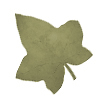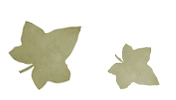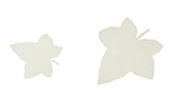|
Burns
by Gillie Whitewolf
There
are three degrees of burn severity: 1st degree burns
injure only the outer layer of skin [ordinary sunburn
is one example]; 2nd degree burns are more painful
and penetrate deeper than just the outer layer of
skin. These usually develop in to blisters; 3rd
degree burns penetrate deeply and tend to destroy
the nerves which would normally tell your brain
you were in pain - hence the most major case of
a burn is also quite often the least painful! Third
degree burns are a medical emergency and professional
medical attention should be sought immediately,
with hosiptalisation often being a necessity. In
cases where a large area is affected the patient
may go in to shock, or may suffer dehydration. There
is also the risk of infection. This brief article
offers suggestions for treating 1st degree burns
[including sunburn] and minor 2nd degree burns -
if you are in any doubt about the severity of an
injury, or concerned about the remedy to administer,
please seek professional medical advice.
Burns
The first step of action when treating a burn is
to cool the affected area down immediately. Plunge
the area in to cold water, or hold it under cold
running water and keep it there for as long as the
patient feels necessary. Ice can also be used as
a more portable cooling method.
Lavender essential oil can be applied neat to small burns,
as can Tea-Tree essential
oil. Both will help guard against infection, soothe
the pain, and boost the immune system. A French
perfume chemist Rene-Maurice Gattefosse experienced
the healing power of Lavender after burning his
hand in his laboratory [c.1920] - he reportedly
plunged his hand into the nearest container of liquid,
which turned out to be Lavender oil. The pain subsided
quickly and the burn apparently healed with no scarring.
The clear gel which oozes from a broken Aloe
Vera leaf can be especially soothing on burns,
and has a long long folk-history of treating cuts,
burns and minor wounds. Many studies have shown
that Aloe can speed up the healing process and stimulate
the growth of new tissue. The clear gel also has
antibacterial and antifungal properties, helping
to keep infection away.
Honey is another long standing folk remedy for treating
burns and wounds. Applied to the area of a burn
Honey creates a natural plaster, keeping infection
out. Honey is an effective antibacterial, with anti-inflammatory
properties and a stimulatory effect on the growth
of new tissue.
Garlic is a powerful antiseptic, to treat a
burn mash Garlic to a paste and apply as a poultice
to the affected area. Garlic can cause skin irritation
in some individuals, should this happen discontinue
use.
Calendula [Marigold]
is another excellent antiseptic - research has shown
the flowers to speed up the healing of burns by
closing wounds, reducing inflammation and stimulating
the growth of new skin cells. The cream can be applied
directly to burns, or the tincture added to cooled
boiled water, or a well strained infusion can be
used for a compress. Chamomile can be used in the same way. Comfrey ointment, infusion or juice can also be applied
to burns - but do ensure that the area is well cleansed,
as Comfrey is known to speed up healing and any
dirt or pus can be trapped - leading to further
infection. [It may be advisable to use Comfrey
only at the edges of a wound if the skin is broken].
Sunburn
Best avoided by limiting your exposure during the
hottest hours, but even the most careful sun worshipper
can sucumb to sunburn. One particularly useful treatment
is cold Chamomile tea,
which can be used to swab the affected area - make
up a strong infusion of Chamomile flowers and allow
to cool before applying to the skin. Calendula petals can be used in the same way, they are immune
system stimulants and are rich in carotenoids. If
the sunburn is more or less all over, a strong infusion
of either can be added to [cool] bath water.
Plain ol' common black Tea can be useful in treating
sunburn - it contains several beneficial compounds
which will help remove heat from sunburn and help
prevent and repair skin damage. Swab cooled black
tea over the affected area.
Studies of Green Tea has shown it to be high in
polyphenols : "When ingested, these chemicals
help protect the skin against damage from the ultraviolet
radiation that causes sunburn." [The
Green Pharmacy, Dr James A. Duke] So next time
you're out in the sun why not treat yourself with
a tall iced Green Tea drink.
The clear gel from Aloe Vera leaves, as mentioned above, is an extremely effective
remedy for burns - if you have an Aloe Vera plant
to hand, break the leaf, squeeze out the gel and
apply to the skin. [Do NOT use the yellowy gel from
the base of the leaf - this part is a skin irritant].
Cucumber is a well known remedy - slices of fresh
cucumber placed over the affected area can give
instant relief from the pain of sunburn. Alternatively
slice a cucumber and wipe it over the skin, or pulp
a cucumber and use the fresh juice to swab the affected
area.
Peach flesh is extremely soothing for dehydrated
skin, as is Apricot flesh - Apricot is rich in Vitamin
A and has a healing effect on the skin. Thin Banana
slices can be applied to skin which has been exposed
to too much sun to restore moisture. Aubergines
have been sited as another useful sunburn remedy,
although not one I've personally tried - apply the
flesh of the Aubergine to the sunburnt area.
Cold Witch-Hazel will cool down sunburn succesfully, and can be swabbed
on liberally as required.
Lavender essential oil can be applied neat to soothe
and promote healing, or add afew drops to an aqueous
ointment.
A remedy I've not tried yet is the use of clay...
It makes sense when I consider it - in many hot
countries people apply clay, mud or henna externally
to prevent sunburn and avoid over-heating from exposure
to the sun. If you are in an area where clay is
present why not smear it on and see how it feels.
I can imagine that it would be very cooling, and
it's certainly one I would try if I was in a suitable
location.... [I wouldn't suggest it for major burns
or open wounds as you may infect the wound].
Vitamin
E is excellent for the skin - ensure that you include
plenty of Vitamin E rich foods in your diet to protect
[and repair] your skin : Wheatgerm, nuts and seeds
[brazil nuts, almonds, sunflower seeds], mango,
avocado, apples, cabbage, spinach, broccoli etc...
Vitamin A and caretonoid rich foods can help prevent
skin damage - eat orange and red fruits and vegetables
such as carrots, oranges, avocado, mango, apricots
and egg yolks.
AHAs [Alpha-Hydroxy Acids] have been gaining incresing
popularity in the world of skin care - AHAs are
found naturally in many foods - they help to exfoliate
dead skin cells [by dissolving the substance which
holds dead cells together] and stimulate the growth
of new cells. AHA rich foods include pineapple,
apples, grapes and sour milk. Any of these could
be applied to sun-damaged skin.
And
that motherly reminder.... Remember to drink plenty
of fluids - water, fruit juices or naturally flavoured
carbonated water - before, during and after your
time in the sun to avoid dehydration, and if you
do burn, when it starts to peel avoid the temptation
to pick at the skin! Let it heal naturally and it
will heal quicker.
The
herbal remedies mentioned in this article are not
intended to replace professional advice. Any medication
you are on should also be taken into consideration
- always check with your healthcare professional
if you are on prescription drugs before taking herbal
remedies. In the case of serious burns professional
medical attention should be sought immediately!
|
|












